Weekly round-up: 04 - 10 Mar 2015
Something of a Groundhog Day where bird news was concerned for the most part last week, with much of the previous week’s bird news being recycled once more. With every passing day though there are more hints that the dam is going to start to break soon enough, with more and more hirundines being reported, a scattering of Garganey and, heaven help us all, even an optimistic singing Turtle Dove reported this week.
Weatherwise though, while the south of England could have been mistaken for thinking that spring really had sprung, in the north as the week closed it was a very different story indeed – despite what Roger McGough would have us believe, Winter wasn’t coming out of his corner looking groggy just yet – as some properly snorty westerlies fresh off the Atlantic battered the Western and Northern Isles, it still felt plenty wintery from where I’m sitting. You can’t keep a good season down.
Still, next week... Looking at the charts the weather seems to settle down in the south at least, with a whopping big lump of high pressure centred over western Europe. There might not be any super-duper southerly winds whisking birds up from North Africa just yet, but at least you might get some pleasant days to wander round the local reservoir and check out the Sand Martins.
And that’s because, at long last, the migrants have started coming and it’s just a matter of time before you bump into your first Wheatear of the year or if they’ve not all been shot on migration, hear a purring Turtle Dove advertising his wares. Only this morning I was watching a pair of Oystercatchers trying to get jiggy here in Shetland. Unfortunately the male kept being blown off his mate, though what he lacked in balance he was making up for with tenacity. Love in a cold climate and all that...
Meantime, I could tell you all about my recent Costa Rican hummingbird quest, or else do the week’s birds. Let’s save the former for another time, and do the latter with no further ado. Here’s your birds:
In a week otherwise dominated by headline birds that have either been mainstays of recent weeks’ news or represent lots and lots of an otherwise predictable winter visitor, one happy chink of light shone through at the tail end of the week hinting at brighter, warmer, migratory things to come – an Alpine Swift found scything the sky over Wolverhampton (West Midlands) on 9th – the first proper spring rarity of the year, and while not the earliest ever (that accolade goes to one over Chew Valley Lake (Somerset) on 18th February 1998) it’s still pretty damn early in the year. The first, but certainly not the last we’ll be seeing in the coming weeks – though looking at past statistics, the species has become noticeably scarcer in the past ten years...
Which isn’t to detract from what this particular bird means in a West Midlands context – this is only the second for the county following one in 1988 that, despite the best of intentions, met a sorry end...
Found exhausted at Rowley Regis and taken into care on March 16th, it was sent to Portugal courtesy of British Airways on 20th – almost certainly making it, in passing, the fastest an Alpine Swift has ever travelled through the air. This honour aside, said bird was found to be dead on arrival.
As the week closed, an unconfirmed report of two more came from Wheathampstead (Hertfordshire) on the afternoon of 10th…
I’m not entirely sure what the record count for a single site of Iceland Gulls would be, but I imagine we don’t have to look much further back than the remarkable winter of 2011/2012 when the entire country seemed deluged with them – when on one visit the Whalsay (Shetland) fish factory alone had attracted 54 birds (and five Glaucous Gulls for good measure) for example. Whether or not the 72 birds counted this week on 8th along the coast between Butt of Lewis and Port Nis (Western Isles) threatens or surpasses the record, I’m not quite sure – but it’s surely right up there, and represents a surge of late-winter records for the species in the past few days.
/iceland_gull_tmc.jpg)
Speaking from personal experience, when white-winged gulls outnumber the local Herrings and Great Black-backs by a factor of some 4:1, you know you’re having a good day – and almost anything gullish feels possible. Almost 100 Icelands were recorded on the Western Isles archipelago on 8th, and when one factors in the individuals that will certainly have gone unrecorded in the islands’ many nooks and crannies, that’s a really impressive arrival of glaucoides.
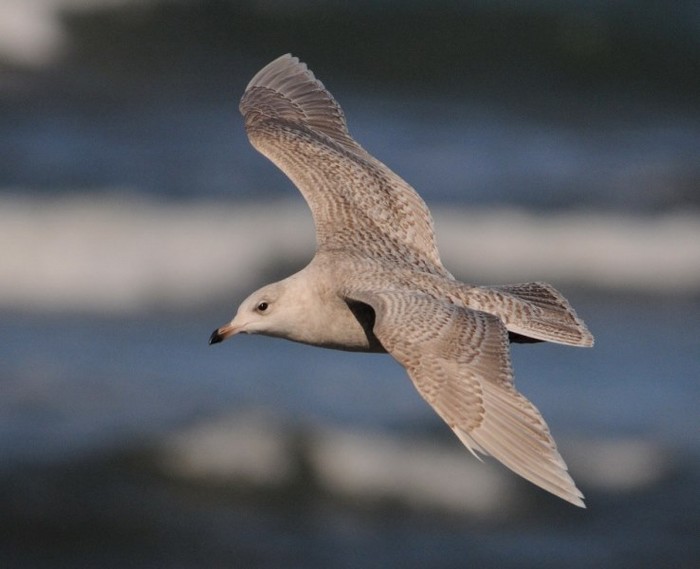
Just when it seemed everything interesting or hyperbolic had been said in the past weeks about the Aberdeenshire Harlequin and there was nothing left in the tank for your correspondents to play with... it went and did something interesting and novel this week.
It went missing.
And until the dying days of the week, not a whisper of this dapper duck filtered out onto the airwaves. Had it cocked a snook at Mr Golley’s predicted departure date of March 26th? It was looking that way right up until 8th when it was back again on the River Don, and still there as we closed the week on 10th. A huge relief to Mark, I’m sure, bad news for all the bookies who’ve been hoping for an early profit from his departure date punditry, but above all good news for anyone who’s yet to pop to Aberdeen for a look at the bird in question. It’s still there, and it’s lookin’ good. What’re you waiting for?

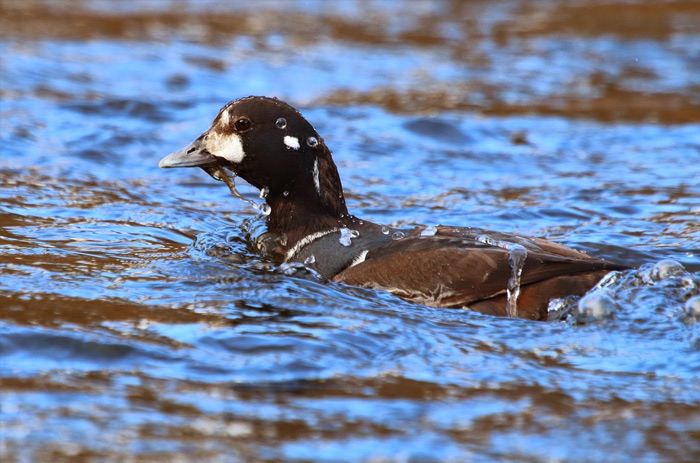
Meanwhile, after a quiet week news came through on 10th that the lady Harlequin had been going about her business at Brora the past seven days with nary an admirer. They just don’t give a duck, these wildfowl.
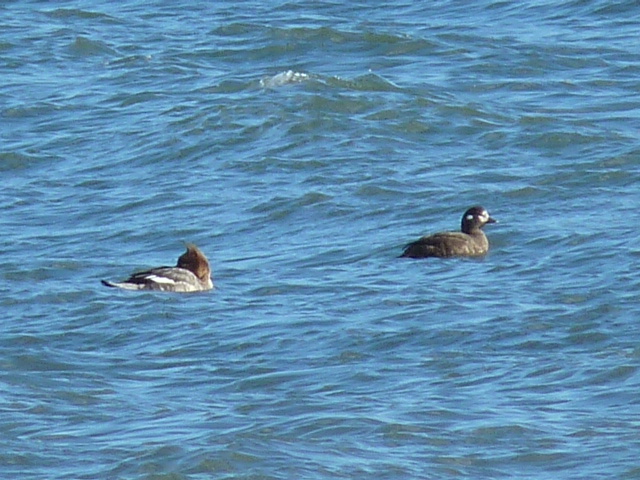
Sticking with the ducks but switching our attention across the water to Ireland, in Co.Kerry the drake Black Scoter was once more off Rossbeigh until 8th. Plenty of us will have cut our Black Scoter teeth with the regular bird in Wales off Llanfairfechan (Gywnedd) between 2002 and 2007, and so the probable drake reported off there on 9th is hardly without precedent. We’ve been spoiled for choice lately where these smart birds are concerned – though no record remains quite as bizarre as that drake picked up on a railway line in Lancashire in 2006...
Both of our wintering American Coots clocked in again this week – with the Co.Kerry bird on Lough Gill still until 5th at least, and the Balranald RSPB bird noted as still present on North Uist (Western Isles) on 8th. Will either of both make it through March and into April? I can sense the palpable tension and excitement mounting...
Down in Cornwall this week the Pacific Diver off Penzanze was playing ball for the most part all week, and occasionally even showing well in and around Mount’s Bay. When what is presumably the same bird was noted there in past winters it’s usually last seen sometime in March, so an imminent departure is on the cards. It’d be particularly nice if it, or another, would put in another spring appearance up here in Shetland (and anywhere else you fancy en route; I’m generous like that) – having missed the summer plumaged adult bird off Grutness in 2013 despite being sat a few hundred metres away blissfully unaware of its presence at the time still hurts.
Sticking with the divers, the wintering adult White-billed Diver remained in Hope Bay, South Ronaldsay (Orkney) until 10th – a reminder that, amongst the many other signs of spring all around us, it won’t be long now before goodly numbers of these super banana-bills are to be found off the Scottish coast. If that Harlequin hangs around a while yet a trip north to Aberdeenshire could be particularly fruitful.
Three Little Auks were logged during the week: off Slapton (Devon) on 4th; Auchmithie (Angus) on 7th; and off Tynemouth (Northumberland) on 8th.
A similar story to report with Pomarine Skuas, with three birds noted: two past Thorpeness (Suffolk) on 4th, and one off Girdle Ness (Aberdeenshire) on 8th. Getting firmly into stuck record territory, the clock’s ticking down now until the moment when all that’s about to change and they’re going to be steaming past our headlands...
Denge Marsh (Kent) continued to prove an attractive hang-out for the settled pair of Cattle Egrets, remaining in situ until 10th. Kentish Great White Egrets meanwhile were more dispersed, with one reported sporadically throughout the week from the Dungeness area, one at Chetney Marshes on 8th, and seen coming in off the sea that day at Pegwell Bay.
With no notable gatherings anywhere, it was all singles and duos as the week progressed, with some 20 birds noted from 13 counties; a further reduction on last week’s depleted tally. Somerset had birds at Ham Wall RSPB on 4th-5th, Catcott Lows on 5th-9th, Shapwick Heath NNR on 4th-9th, and two birds noted at Tealham Moor on 4th. One was in Hampshire at Broadlands Lake on 6th, and one was noted further west in Cornwall at Tresemple Pool on 8th.
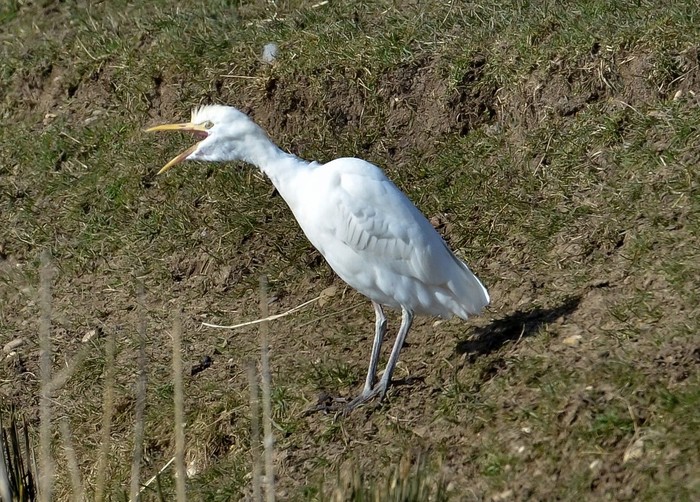
Essex accounted for a bird on Potton Island on 8th, while one was in Suffolk on Hockwold Washes on 7th, and one flew over UEA in Norwich (Norfolk) on 10th. One was noted on 6th at Rutland Water (Leicestershire) with two there the following day. Northamptonshire saw one on 4th-8th at Summer Leys NR with two there on 7th-10th, and one at Stanwick GPs on 4th. One was noted in Lancashire at Leighton Moss on 7th, and another in Cumbria on 8th at Salt Coates.
Records came from Wales at Llangorse Lake (Powys) again on 5th and another reported from Kidwelly (Carmarthen) on 6th. From Ireland one was reported at Akeragh Lough (Co.Kerry) on 5th.
It was another relatively quiet week for Glossy Ibis with birds remaining at Tramore (Co.Waterford), Fen Drayton (Cambridgeshire) and Gonalston (Nottinghamshire) on 4th, the latter bird staying put until 9th; and further single birds recorded at Burscough (Lancashire) on 6th, Chain Corner (Cambridgeshire) on 7th and Two tree Island (Essex) on 8th.
Spoonbills remained scattered all along the south coast, with the most notable aggregation still being in the attractive surrounds of Poole Harbour (Dorset) – Shipstal Point holding varying numbers all week with a peak count of 19 on 8th. Elsewhere nearby birds were logged at Lytchett Bay, Brand’s Bay, Hole’s Bay, Littlesea, Brownsea Island, and in the west at Radipole and Lodmoor in the latter part of the week. While one was in Hampshire at Titchfield Haven on 7th-10th, the brunt of Hampshire spatula-face action focused on the Penngington Marshes area where up to five individuals ebbed and flowed as the week went on. Devon remained a happy hunting ground for the species also, with one again on Drake’s Island on 5th and up to four individuals frequenting the River Taw throughout the week. At the very tip of the country one was on Tresco (Scilly) on 4th.
One was in Pagham Harbour (West Sussex) again on 4th, with three birds noted again at Medmerry RSPB on 4th-10th, and one at Selsey Bill on 5th. One was noted in Kent at Elmley on 8th.
Three birds remained in Suffolk at Minsmere RSPB on 4th-8th, with two still there on 10th; while three birds were logged in Essex at Holland Haven CP on 9th-10th.
The sole Irish record came from Co.Waterford where one was still at Tramore on 4th.
Good news kicks off proceedings in Honkers Corner – for all the fans of what used to simply be Canada Goose, your Ridgway’s Cackling Goose was still at Cults Loch (Dumfries & Galloway) on 6th-9th. Hooray.
On Islay, a Richardson’s Cackling Goose was at Esknish on 4th, while in Ireland the Lesser Canada Goose remained on the North Slob, Wexford Wildfowl Reserve to 7th.
Numbers of Black Brants were on the rise again this week, with either nine or ten logged depending on whether or not one at Pagham Harbour (West Sussex) on 6th was pure or a hybrid... Less controversial were individuals at Gosport (Hampshire) on 4th-9th; Gibralter Point (Lincolnshire) on 7th-10th (with a hybrid there also on the latter date); Loompit Lake (Suffolk), Powderham (Devon) and Potton Island (Essex) on 8th, with two birds at the latter site; at Spurn and Kilnsea (East Yorkshire) on 6th-9th, with two birds at Kilnsea on 9th; and at Ventry (Co.Kerry) on 10th.
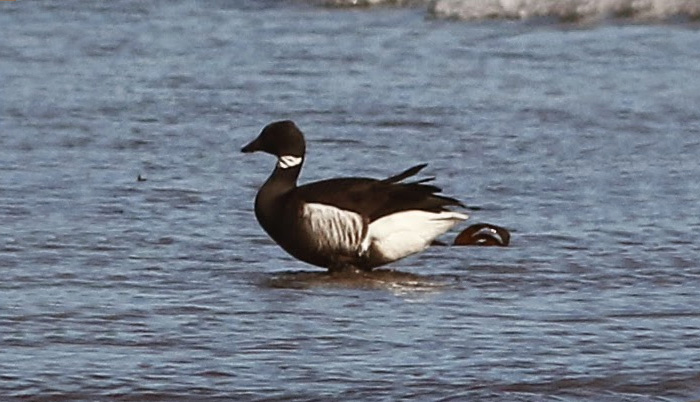
On Orkney the Snow Goose remained at Deerness, on the Mainland, to 9th while in Northumberland the Ross’s Goose did itself some favours by continuing to hang out with 3,000 wild Pink-footed Geese but no favours whatsoever by still being there at all. It’s one of the Golden Rules of Rare Wildfowl. Thou shalt not take bread; thou shalt have a full set of primaries; thou shalt hang out in good company with thy wild brethren at a suitable location (even Chilham Lakes if thou art a Hooded Merganser; thou shalt not turn up in the middle of summer (unless thou art a Bufflehead, in which case it’s alright then); and thou shalt never, under any circumstances, stay too long. This one was still there on 8th, which might be getting on for too long, while down in Cambridgeshire another was at Burwell Fen with Canadas and Greylags on 4th (which might qualify as bad company).
Into the sea ducks, and we start down in Cornwall where the first-winter drake King Eider was still at Maenporth through to 8th whilst the queen remained in Largo Bay off Ruddon’s Point (Fife) on 4th.
A bit of a reduction in Surf Scoters this week with a shade over half a dozen to report – staying in Scotland, one was off Musselburgh (Lothian) still on 8th; while in England the popular drake remained in Hampshire at Stokes Bay on 4th and the settled first-winter drake was still in the Stour Estuary (Essex/Suffolk) until 10th. One was reported from Wales off Llandulas (Conwy) on 4th still with three there on 10th, and two past Rhos Point on 10th. Meanwhile in Ireland the first-winter drake was still off Rosslare (Co.Wexford) on 8th, and the drake was still off Lahinch (Co.Clare) on 9th.
And adult drake Lesser Scaup was in Cornwall on Colliford Lake on 7th-8th, with the regular drake still in Glamorgan in Cardiff Bay this week on 5th-10th. The first-winter drake remained in Ayrshire on Martnaham Loch on 7th.
Seemingly spurred by last week’s poor showing, Britain and Ireland’s birders put in a stint this week reporting Ring-necked Ducks - with 12 birds in all logged. Irish drakes were at Lough Cullin (Co.Mayo) on 8th still (two birds present here); on Knockaderry Lake (Co.Waterford) on 4th-9th; Lough Shivnagh (Co.Donegal) on 6th still; and on Lough Gara (Co.Sligo) on 8th still. England, Wales and Scotland accounted for a drake apiece at Clatworthy reservoir (Somerset) still on 5th-7th, Bala Lake (Gwynydd) on 8th and Loch of Skaill (Orkney mainland) on 8th still. Females were at Loch Sandary on North Uist (Western Isles) on 8th still, at Billing GPs (Northamptonshire) on 7th-8th, and two together still at Carlingwark Loch (Dumfries & Galloway) on 10th.
Nine drake Green-winged Teals were your lot this week where that species was concerned, with regular faces the order of the day. In chronological order, birds were noted at Dorman’s Pool (Cleveland) on 4th-10th;at Abbotsbury (Dorset) on 6th-9th; still at Caerlaverock (Dumfries & Galloway) on 6th-9th; at Askeaton (Co.Limerick) still on 6th also; at Layton (Co.Meath) and North Ronaldsay (Orkney) still on 7th; at Ballycarry (Co.Antrim) on 8th still; at Loch of Tankarness (Orkney mainland) on 8th-9th; and at Mersehead RSPB (Dumfries & Galloway) on 8th also.
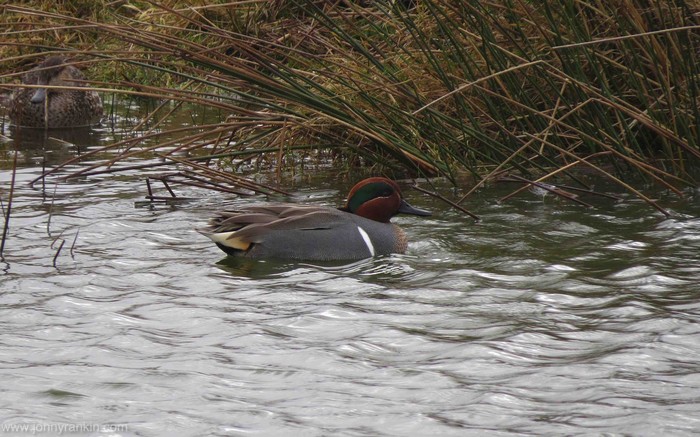
A sharp reduction in American Wigeons in the past days, with only a quartet to report – faithful English males at Swillington Ings (West Yorkshire) until 10th and on Holme Pierrepont (Nottinghamshire) until 10th; in Scotland the drake was stll at Fairlie (Ayrshire) on 10th; and in Ireland, one more male was still at Cahore (Co.Wexford) on 8th.
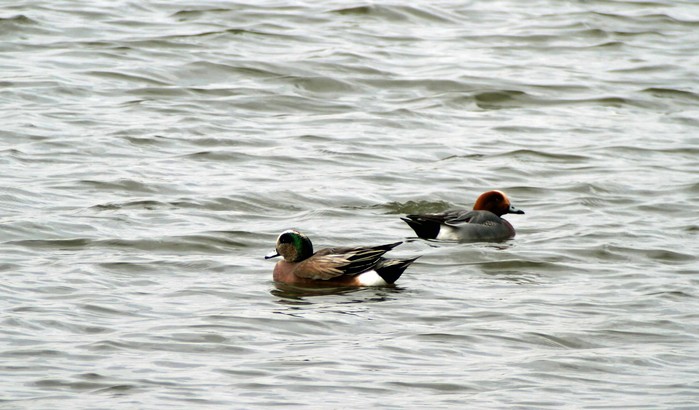
Back up on Orkney the drake Blue-winged Teal remained on the Mainland, at The Shunan until 10th while down on Scilly the drake Black Duck just squeaked into another week, being noted on Tresco on 4th.
Straight back to being very, very peaceful in the wonderful world of waders this week, with just the Lesser Yellowlegs on Dublin’s Rogerstown Estuary keeping a pulse flickering, noted there again on 6th-7th.
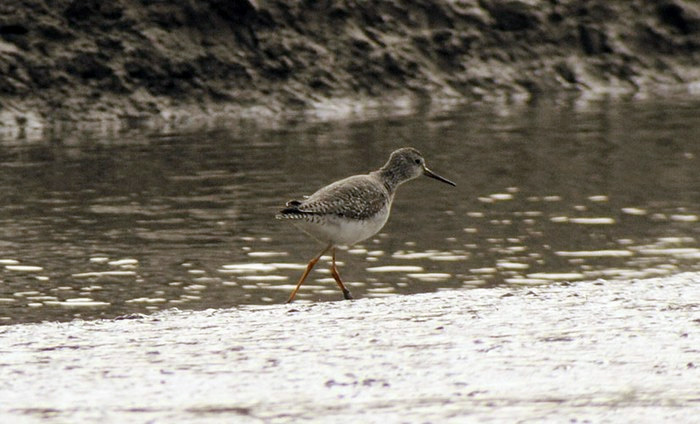
There was a contender for bird of the week in amongst the usual gullish offerings this week – something very special indeed was almost found on 7th in Cheshire at Richmond Bank – what looked at first to be an adult Audouin’s Gull no less. Since Britain’s first in 2003 (and I’m looking at a rather lovely Norman McCanch watercolour of said Kentish beauty even as I write this) this species has remained on the radar of any keen laridophile, and sure enough, there’ve been a few more to further whet the appetite. So far, so good.
This latest bird was all too brief, seen in the late morning before flying off, not to be seen again. But it had been photographed... and therein lay the rub. What had initially looked like a probable Audouin’s was now looking more like a probable atypical Herring Gull. Which is a terrible shame, but a great bird to learn from. Gulls. No one ever said it was gonna be easy...

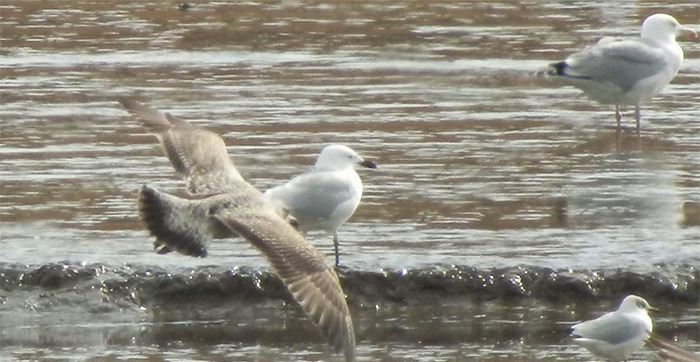
Staying in that neck of the woods, the first-winter Laughing Gull remained in Cheshire giving itself up at New Brighton until 10th. What a charmer this bird has proved to be. Meanwhile, further afield the second-winter individual remained in Co.Cork at Ballycotton until 10th also.
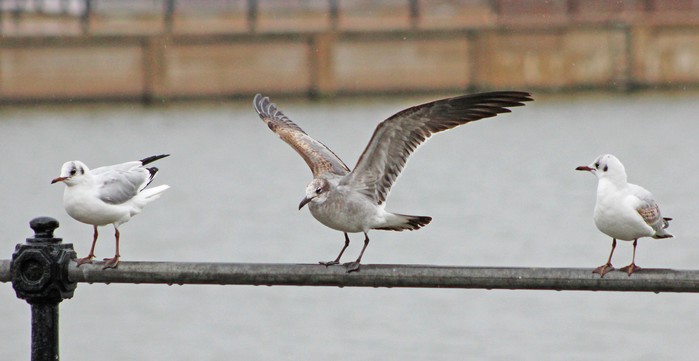
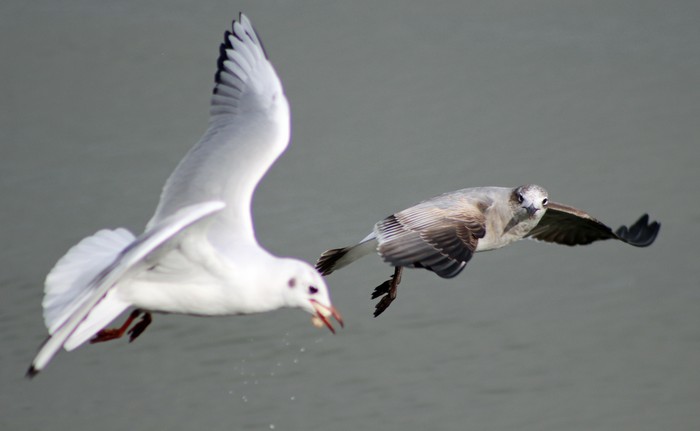
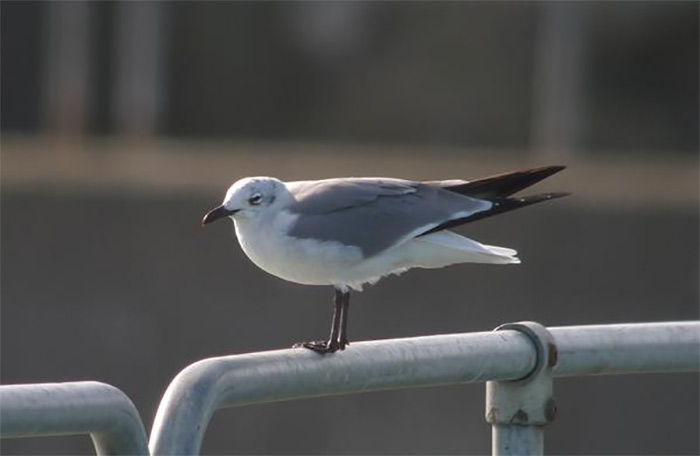
Three Bonaparte’s Gulls were on offer this week at various points – the Cardiff Bay (Glamorgan) and Dawlish Warren NNR (Devon) adults on 7th and 8th respectively, and a first-winter in the Portland Harbour area of Dorset on 7th.
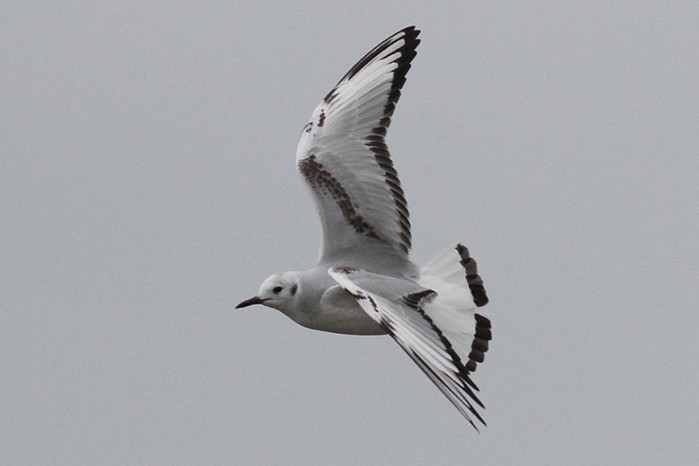
A much healthier showing all round where Ring-billed Gulls were concerned compared to last week, with almost twice as many birds reported – a shade under 30 in all. Taking a deep breath, we’ll kick off in Ireland where the best showing of all was in Co.Galway at Nimmo’s Pier where four birds were noted on 6th. Elsewhere in Ireland two birds were in Cork city (Co.Cork) on 4th, and a whole heap of single birds were scattered elsewhere: in Carrickfergus (Co.Antrim) on 4th still; at Tramore (Co.Waterford) on 4th-10th; on Bull Island (Co.Dublin) on 5th; on Whitehouse Lagoon (Co.Antrim) on 7th; in Wexford town (Co.Wexford), Clare Castle (Co.Clare) on 8th still; at Galway (Co.Galway) on 8th also; and at Blacksod (Co.Mayo) and Portrush (Co.Antrim) on 9th.
Cornwall had plenty to offer this week, with the first-winters still at Swanpool on 4th-8th and on the Hayle Estuary on 5th-7th; with an adult at the latter site also on 7th-9th. The adult remained at Marazion on 4th-9th, while another adult was logged at Helston on 7th. A short(ish) flight away on Scilly an adult was on St.Mary’s on 4th-6th.
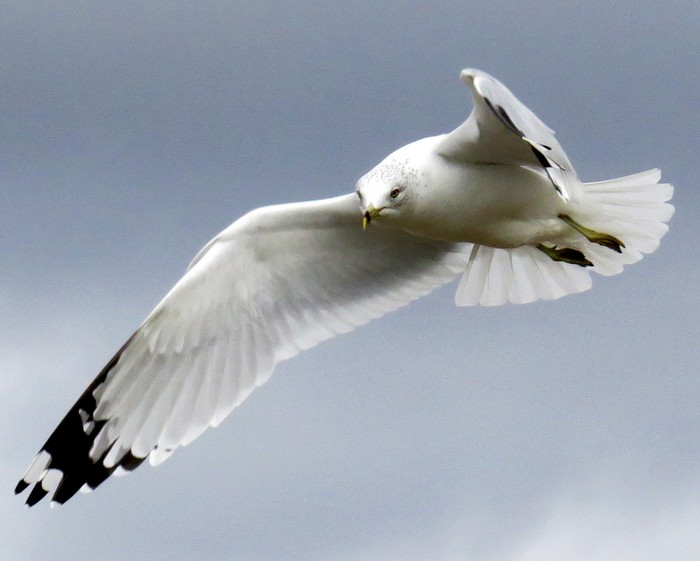
The regular adult continued to hang around Gosport (Hampshire) until 10th, with one noted at Blashford Lakes on 5th again. Scotland accounted for the adults still at Townhill CP (Fife) until 10th and on Strathclyde Loch (Clyde) until 8th. Wales meanwhile had an adult still at Llys-y-fran reservoir (Pembrokeshire) on 4th-7th.
Glaucous Gulls stayed much as they were with some 60 birds recorded from over 25 scattered British and Irish counties once again. While most involved single birds, notable counts were topped by Killybegs (Co.Donegal) where six were recorded on 6th, followed by Peninerine on South Uist (Western Isles) where four were logged on 8th. A number of trios were noted during the week, with a particularly happy threesome at Carnsore Point (Co.Wexford) feeding on a nice ripe dead seal. Yum.
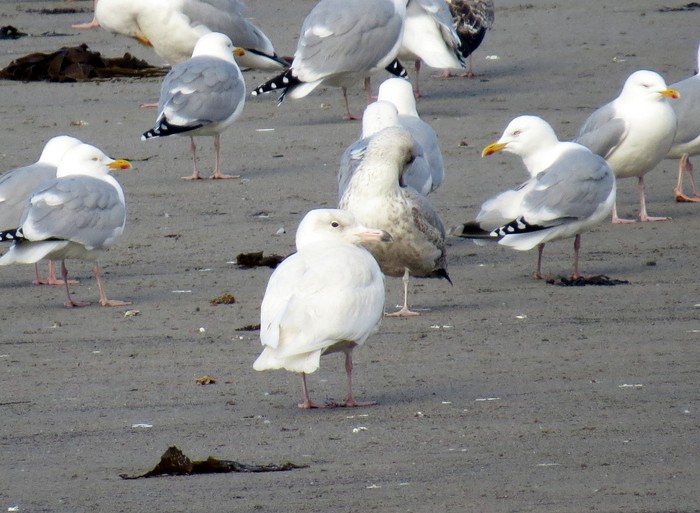
Last week we resisted the temptation to elevate Iceland Gulls en masse to the headlines, but as you’ll have already seen, this week’s bumper count in the Western Isles proved irresistible. The bald statistics then where the region as a whole’s concerned this week...
Over 200 birds logged nationally, and that’s probably something of an understatement of the real figure as numbers ebbed and flowed at many a site, and there must have been countless dozens on untouched coastlines in the north and west. You’ve already heard about Lewis, but double figures were also touched in Stornoway Harbour (15 birds on 8th) and at Killybegs (Co.Donegal) on 6th. A final note of interest came in the form of a ringed individual at Rainham Marshes RSPB (London) on 6th – Norwegian ringed, that one.
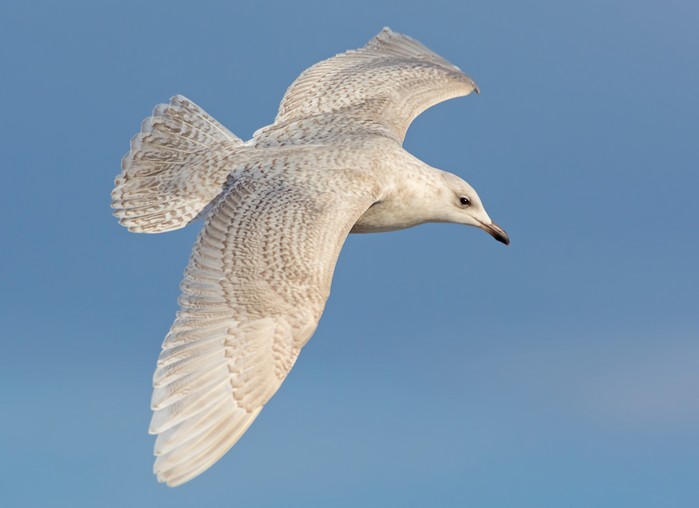
The new gull mecca of the north, Rufforth (North Yorkshire) hosted two Kumlien’s Gulls in the week, with an adult and a juvenile there on 4th and the adult remaining present until 6th. (The same magic site hosted the possible first-winter American Herring Gull again on 5th). Elsewhere two juveniles were noted, one in Scotland at Ormsary (Argyll) on 6th again, and one in Ireland at Lurgan (Co.Armagh) on 8th-10th.
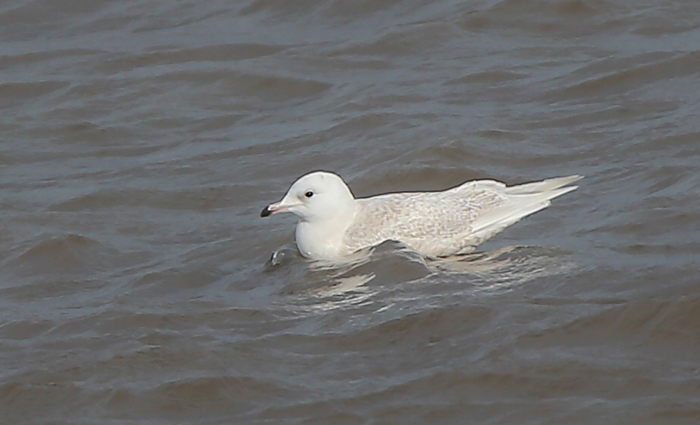
Sticking with Ireland, in Co.Galway, the itinerant adult Forster’s Tern was seen again at Newtownlynch Pier on 6th. I’ve said it before, and it bears repeating – one on the British mainland would prove a popular draw.
It felt like history repeating itself when I came to marshall the raptor news this week – pretty much a duplicate of the last time I was here a fortnight ago. Loadsa Rough-legs? Check. Irish Gyrfalcon? Check also. White-tailed Eagle over Ruffside Moor (Co.Durham) on 8th? Hang on, that’s new that is!
Back to the other stuff, the grey morph Gyrfalcon was again noted at Lough Gill (Co.Kerry) on 5th-6th. And then there were those Rough-legged Buzzards... Which we’ll start to handle by dealing with those not in Norfolk.
The Holme Fen (Cambridgeshire) bird remained there on 4th-7th, while in East Sussex at Jevington that particular wintering bird was still present on 8th. Other familiar faces were at Wallasea Island (Essex) on 8th-9th still, and in Dumfries & Galloway at the Mennock Pass on 5th again. Further individuals were reported from Harwood Forest (Northumberland) on 4th; from East Yorkshire at Fraisthorpe on 7th and Buckon on 7th-10th; and one was reported from Barry (Glamorgan) on 5th, reportedly there since late November 2014.
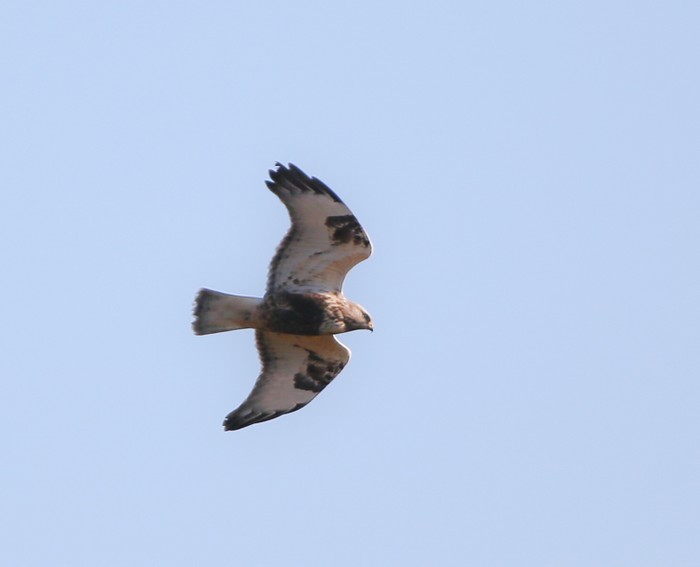
And so to Norfolk, where numbers remained a moveable feast at a variety of sites, but still seemed to involve at least five birds, and possibly a smidgin more... Top count came from Breydon Water where as many as three (or more) were noted on 8th; while two birds were logged at Halvergate Marshes on 4th-8th, at Burnham Overy on 6th-7th, and over Belton on 8th.
We’ll kick off the passerine section with Yellow-browed Warblers - in a week when five birds were recorded, one bird in particular stands out as a bit of a star turn – one found in Worcestershire in the bushes around the sewage works at Sedgeberrow on 6th (and still present there until 10th). We’re used to hearing about them turning up in the warm and clement south-west in winter; and even in the moat at the traditionally chillier Dungeness bird observatory; but this bird in an inland location surely goes to show that perseverance working an inland beat as your local patch can be rewarded with a real gem from time to time.
More predictable but no less welcome warbler-fare came with Yellow-brows in Devon at Slapton Ley still on 4th; at Uffculme on 5th; and by the Plym Estuary on 7th-8th still; and in Cornwall at Ponsanooth still on 6th.
The long-staying Penduline Tits were still to be had in Devon at Darts Farm RSPB with two birds noted there until 10th.
Further north, all three Black-bellied Dippers made it into another week: the Shetland birds still being present at Skaw on Unst on 4th and at Voe on Mainland until 7th; and further south, the individual in East Yorkshire at Harpham remained until 10th and was clearly feeling the sap rising as it was noted singing...
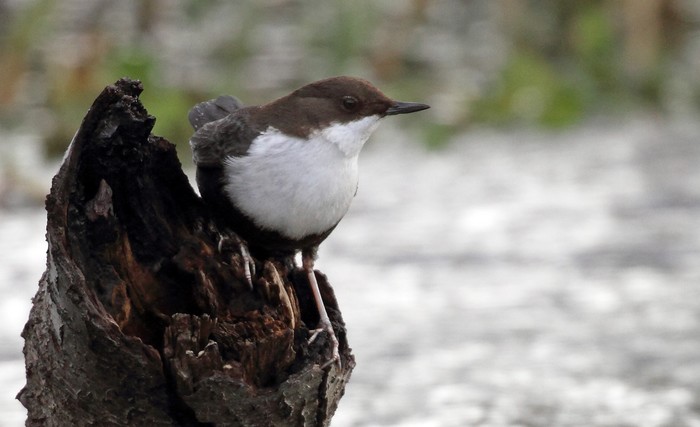
Richard’s Pipits remained in the news for another week, with the two Norfolk birds still at Breydon Water RSPB at the start of the week with two again there on 10th. Elsewhere, the bird in North Yorkshire was again noted at Cloughton Wyke on 7th; and in Cumbria, the individual last reported from Lowca in mid-February was again seen there on 8th-10th.
Sticking with birds that, um, have stuck around a while, we head south again to Essex where the two male Serins remained in Gunners Park, Shoeburyness until 10th. A first-winter male House Finch was photographed in a private garden in Tiptree (Essex) on 9th. Just saying… and somehow wishing the Rarity Roundup allowed for a small winky emoticon thingy.
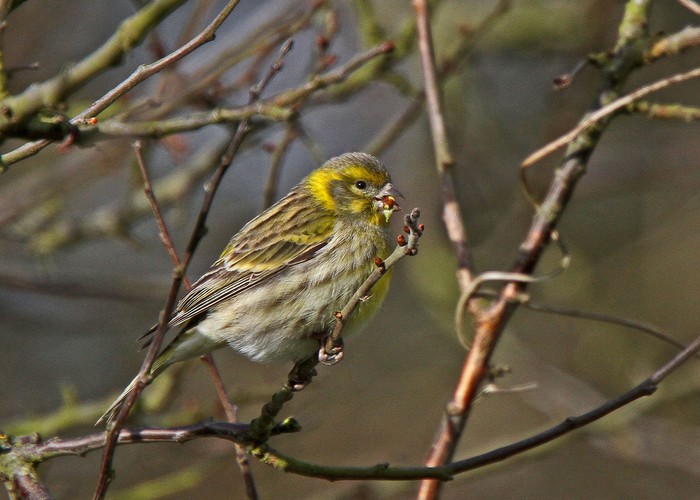
Two of the three recently reported wintering Little Buntings were logged again this week – with no news from the Ashdown Forest it fell to the birds at Forest Farm, near Cardiff (Glamorgan) until 10th and at Gulval, near Marazion (Cornwall) until 10th also to keep the side up.
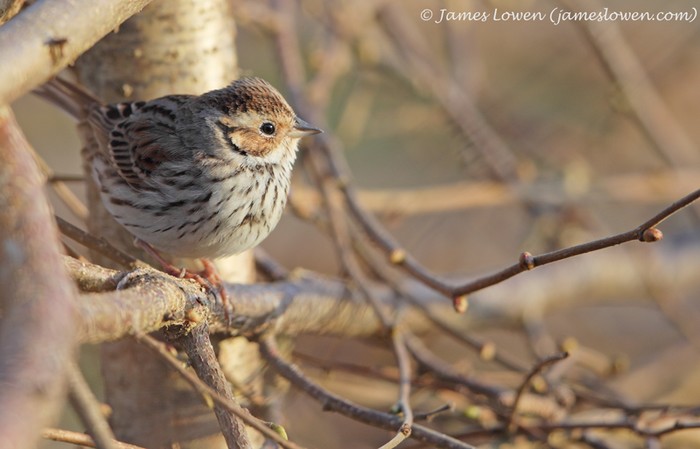
And so to Waxwings, which once again won’t be bothering us unduly this week, with yet another feeble showing. The only notable (if that’s the right word) flock was the 10 birds seen in Ipswich (Suffolk) on 9th – the remainder were mere handfuls, with two birds at Wymondham (Norfolk) on 4th; one at Acomb (North Yorkshire) on 5th-10th; two birds at Darlington (Co.Durham) on 6th rising to four birds thereafter there until 10th; and four birds noted briefly at Knaresborough (North Yorkshire) on 8th.
A probable Rose-coloured Starling was reported from Swalwell (Co.Durham) on 10th.
Our canter through the passerine news hits the closing straight with Great Grey Shrikes, where with 23 birds recorded numbers held pretty firm on last week. We’ll kick off in the south where one bird lingered at Milkham Inclosure on 6th-7th, and two birds were on Stoney Cross Plain on 8th and one at Bransbury Common on 8th. In Dorset, one remained in the vicinity of Godlingston Heath until 9th, while up in Gloucestershire one remained at Crabtree Hill until 10th.
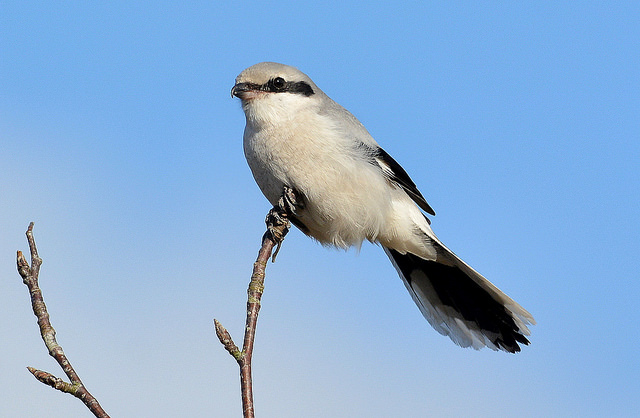
The Iping Common bird remained in West Sussex until 9th, while in East Sussex one was at High and Over on 6th-10th. The settled bird continued its long stay in Kent at Chilham until 10th. In nearby Surrey the Thursley Common individual was still to be seen until 7th.
Moving into Suffolk one remained at Upper Hollesley Common until 10th, while Norfolk accounted for birds at Grimess Grave until 8th and Roydon Common until 10th. One remained into the new week in Buckinghamshire at Grove on 4th still.
The bird at Midhope Reservoir (South Yorkshire) remained until 8th, while in North Yorkshire one was at Heslington on 8th-10th. Elsewhere in the north one was noted at Dalton Crags (Cumbria) on 5th-10th; one was at Beeley Moor (Derbyshire) on 4th-10th; and one remained at Grindleton Fell (Lancashire) on 8th. In Shropshire one was still at Brown Clee Hill on 6th.
Wales accounted for two birds: at Cross Inn Forest (Ceredigion) still on 4th, and Pengwern Common (Glamorgan) still on 10th. Last but not least we finish up in Scotland with a bird logged at Brabster (Highland) still on 4th-5th, and one at Loch Mahaick (Forth) on 10th.
And those were your birds. Still very wintery, on the whole, but that’s all set to change in the near future.
We’re now firmly into spring overshoot territory, and with the first Alpine Swift of the year safely under the belt this week, we can reasonably hope for some more of the same in the coming days. As mentioned last week, it’s the classic time for a Great Spotted Cuckoo, or a scarce heron or two.
Those of a certain tender age may well be longing for another Alpine Accentor - the last twitchable (just) one being back in 2004, there’s a species that’s getting a lot scarcer of late and is beginning to feel overdue another spring showing.
But for me, in a week that was dominated by a whole load of gulls, it’s away from purely wishful thinking and back to gulls that my mind’s eye turns. It’s just the right time of year for a rosy Ross’s Gull to pitch down on a beach or coastal marsh.
And in the style of the great ‘Not BB’, that’d be even less controversial than the Spurn Tengmalm’s Owl...
Jon Dunn
11 Mar 2015








